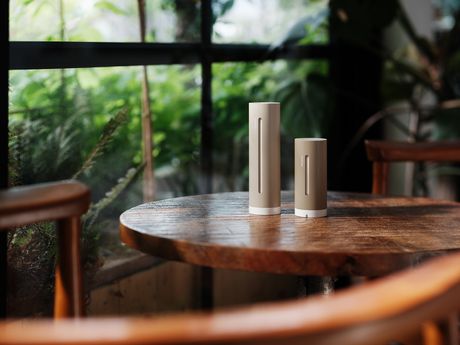
Netatmo unveils the new Weather Station ORIGINAL

Up to 50% off selected productsBuy
A barometer is an instrument used to measure atmospheric pressure. Used notably in meteorology alongside other instruments, it provides important data about changes in outdoor conditions. This study of atmospheric pressure, a phenomenon that can't be perceived, allows weather amateurs and professionals to forecast the weather more reliably.

We've known for a long time that studying variations in atmospheric pressure allows us to predict changes in the weather. This is because atmospheric disturbances cause variations in pressure: low pressure, particularly when the pressure falls rapidly, indicates an upcoming depression and therefore bad weather. Similarly, an increase in atmospheric pressure usually indicates that good weather is on the way. These short-term forecasts are very useful for predicting the weather over the next few hours. This makes the barometer a very useful tool for gardeners, as well as people who work outdoors or who need to plan sporting or outdoor leisure activities.
Even so, merely observing atmospheric pressure using a barometer isn't enough to predict the weather reliably. That's why the barometer is often paired with other measuring instruments: a wind gauge to measure wind speed, a thermometer to see temperature changes, a wind vane to determine wind direction and a hygrometer to measure humidity levels in the air.
Although the information a barometer provides is essential, it needs to be combined with other information to produce reliable weather forecasts. Nevertheless, looking at a barometer allows you to determine the short-term trend in the immediate vicinity and anticipate any changes in the weather.
Unfortunately, just buying a barometer isn't enough: you also need to know how to install it properly, read the measurement and interpret the results.
For good results, carefully choose where you position your measuring tool. A barometer is a sensitive instrument. Place it away from any sources of heat and make sure it is stable in order to prevent impacts and vibrations. Once positioned, avoid moving it to ensure it is not disrupted. You should also never shake a barometer: if you think the needle is stuck, tap it with your finger.
To work properly, a tool like a barometer needs to be calibrated, i.e. set up before being used for the first time. Ask the administrative services in your local town to tell you the atmospheric pressure in the area. Most will be able to give you this information. If not, contact the nearest airport or the meteorological centre in your region. After obtaining this information, adjust the barometer using a screwdriver and the adjusting screw on the device until the needle indicates the appropriate value.
Depending on your position, slightly adjust the position of the needle: pressure falls by around one hectopascal every 8 meters, so bear this in mind if your reference is the pressure measured in a higher-altitude town or one below your location. Once this initial calibration is complete, your barometer is ready to use.
The atmospheric pressure indicated by a barometer differs depending on changes in the weight of the ambient air. This is measured in hectopascals (hPa), or sometimes in millibars (mb), and ranges from 960 to 1,060 hPa. The barometer's needle moves when the pressure changes: below 1,013 hPa it indicates a depression, while above 1,013 hPa it indicates an anticyclone.
Professionals usually use sea-level pressure as a benchmark, i.e. the pressure theoretically corresponding to zero altitude. As this is 1,013 hPa on average, this is the benchmark value.
If your needle doesn't move, it may mean the pressure isn't changing or your device isn't working properly. If in doubt, place it in a plastic bag and compress it lightly. If the pressure doesn't change, you need to adjust the barometer. Check that the needle isn't stuck, rotating it one full turn if necessary, and calibrate the device again.
There are different types of barometers:
To choose the right type of barometer, you have to decide what your needs are: size, wall-mounted or freestanding, the look of the device and its use (boat trips, walks, weather, etc.). For meteorological use it's best to get a weather station, which provides more reliable forecasts, or to use your barometer alongside other measuring instruments: a thermometer, hygrometer, wind gauge, etc.